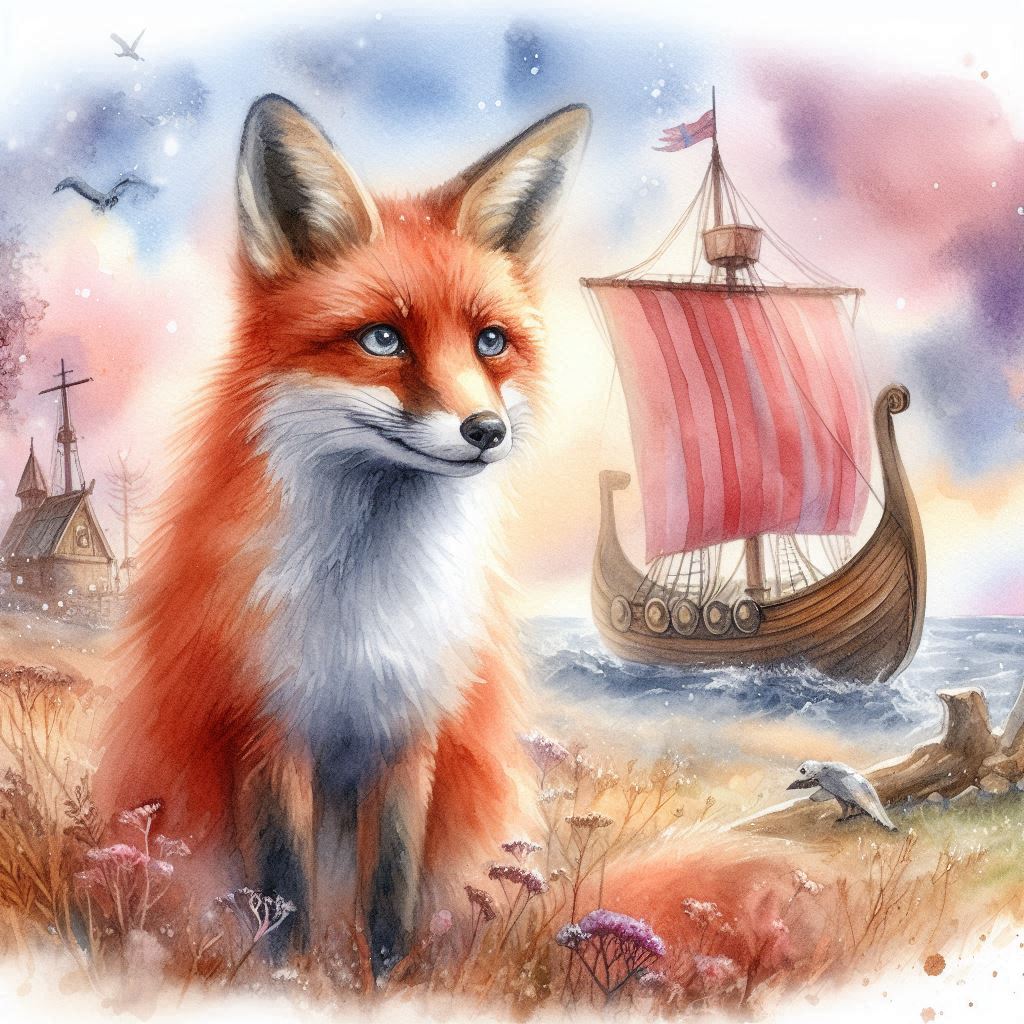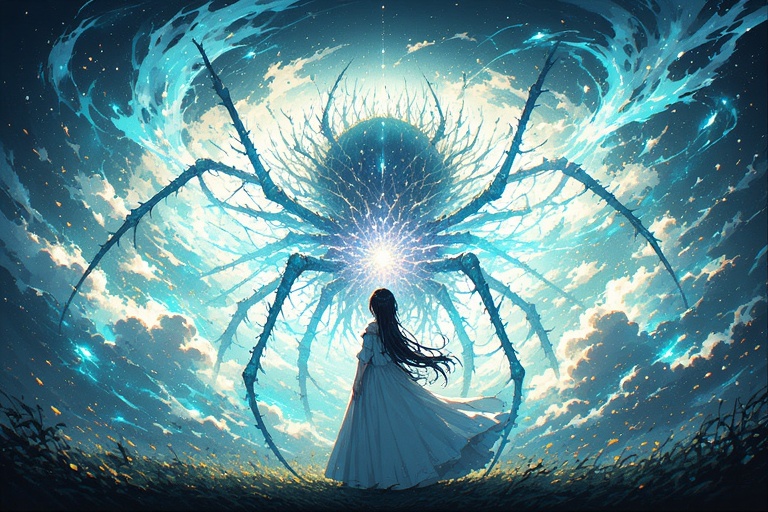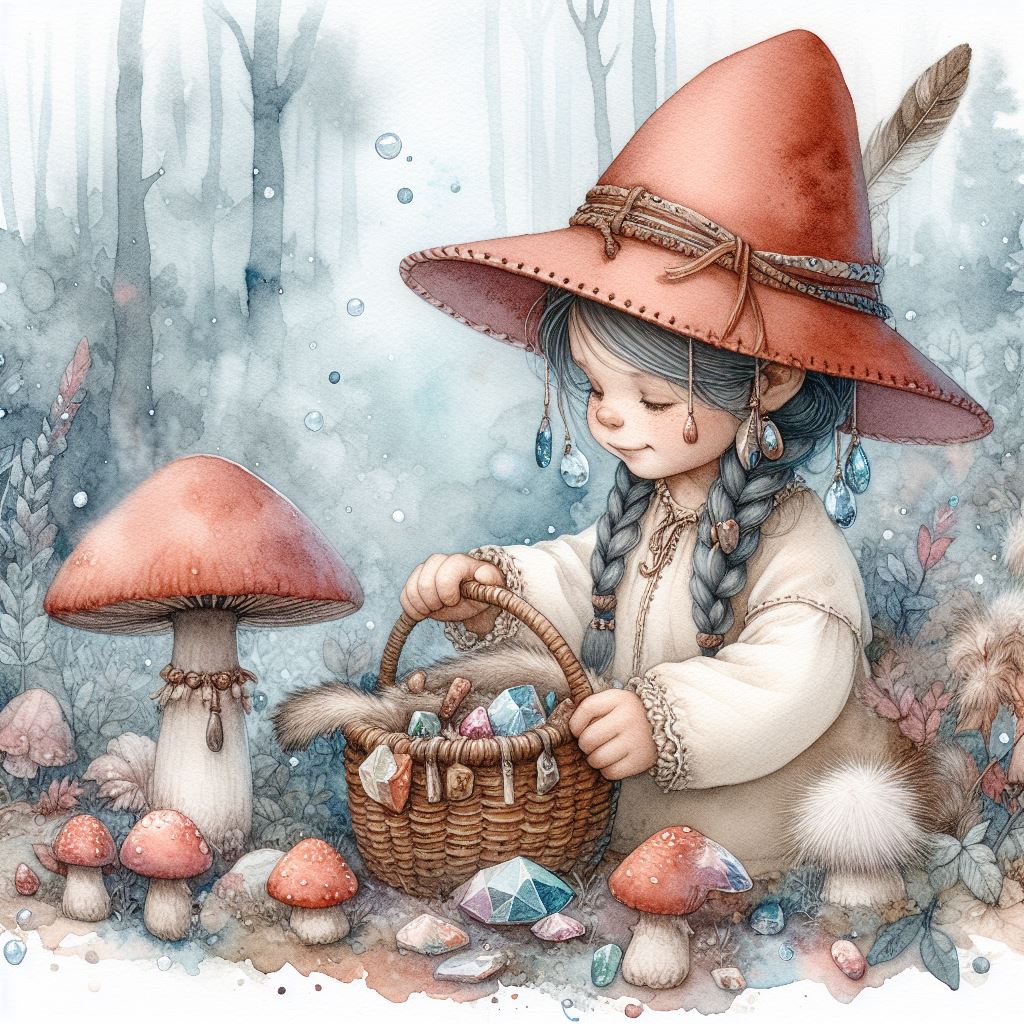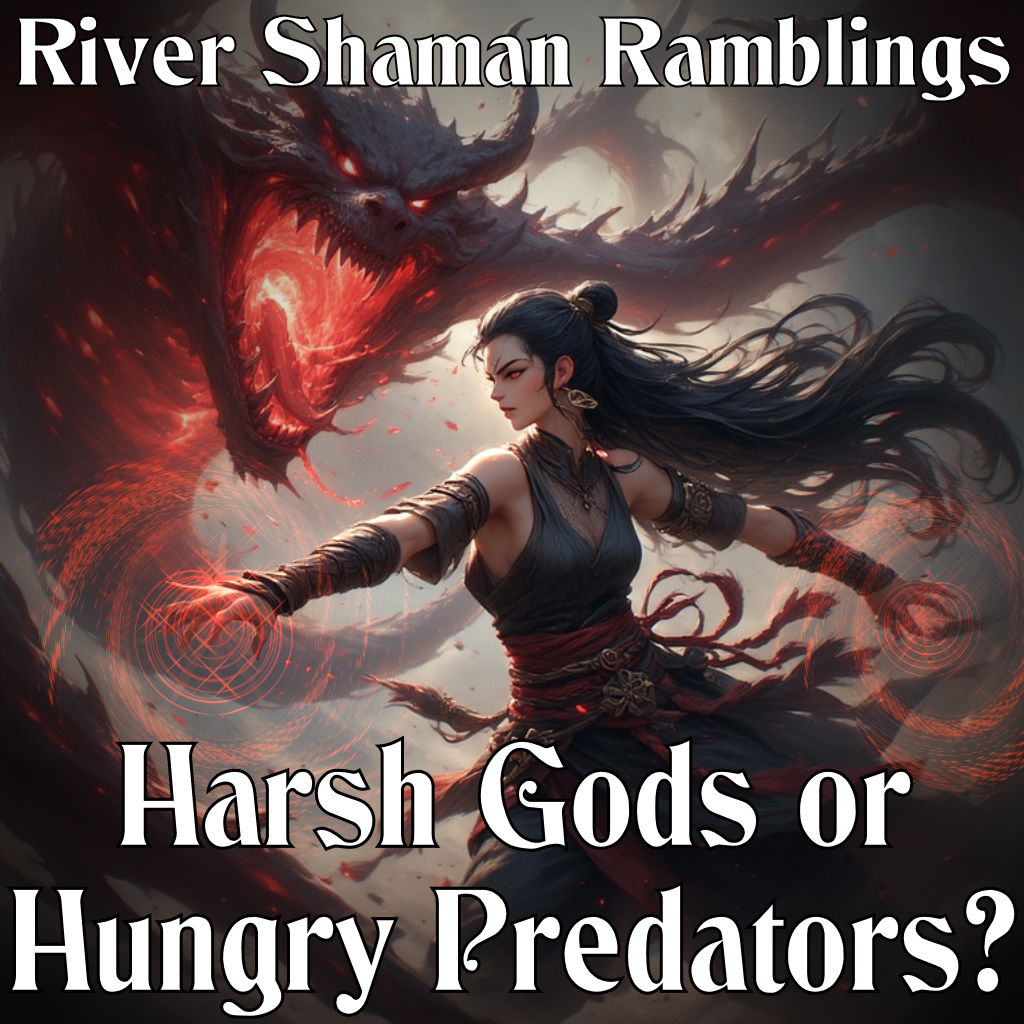
Fox Clan: Rediscovering Lost Animal Kinship in Norse Culture
I am up way before dawn because I couldn’t sleep, and then I found out it was Lion’s Gate. So with cigarette in one hand and ashtray in another I did my ritual, calling a full manifestation down, hearing a subtle “and stand among the stars” with each direction to the point I finally obeyed my guide and called that down as well. And teased him, too… “I’m going to get up there and be like, oh, lookit all the stars. And maybe trip on one.”
But I’m here to discuss past lives, because that’s been a large part of my life journey. With my spiritual journey’s recent hijacking, I’m a bit more careful about it. But there is this memory I’ve had in my head and heart since I was about 4 years old. I was a young girl whose mother had been raped, native American in the colder areas, of the deer clan. But I was halfblooded, half fox, because my Viking father was fox clan.
This memory was always very large to me. I’d tell it to myself often, drawing on brown paper bags (along with another story about being a mermaid fairy, and that turned out… aaah haa… anyway…). The whole story was pretty gruesome for an older person much less a 4 year old, but I remembered it. I remembered the smell of the forest. The day my village was attacked because my father had come to claim me. My despair on his boat, the way the others on the boat didn’t like me, that I was a slave at first but my father soon took me off the oars and accepted me. How I got the others on the boat to turn on him. How I killed him myself and threw his body into the sea.
I’ve just always remembered the animal clans. Once upon a time I could have told you the animal clans of the others on the boat, but I don’t remember now. When I told the story to myself in later years, I named the girl “Viketta” and turned the characters into anthro characters. Even these days I have plans to tell the tale in comic book form.
There were a lot of reasons I might have incorporated it. Being Native American for starters. My mother’s maiden name – Fox – for others. That I’ve just always been kin to foxes. Fox is just a big part of me. But still, that old memory persists and it always has.
Maybe my memory it at least a little bit true. There’s actual (circumstantial) evidence pointing to animal clan systems in Norse culture that have been basically erased from our common understanding.
The Archaeological Evidence
First, let’s look at what the dirt has to say. Archaeologists have found a pattern of animal-associated artifacts that goes way beyond random decoration:
At the Oseberg ship burial (one of our richest Viking archaeological sites), they found fox fur and bones arranged in what appears to be ritual positioning. Not just “we had a fox pelt” but specifically placed in ways that suggest identity markers. (Price, 2019)
In several graves across Scandinavia, particularly in central Sweden, they’ve found fox teeth drilled and worn as pendants – not just as random jewelry but consistently appearing in certain family burial groupings. The consistency suggests kinship marking rather than fashion. (Jennbert, 2011)
The Borre style animal art (9th-10th century) includes fox imagery that appears on personal items in ways that archaeologists now believe represented lineage or clan affiliations. These most likely weren’t just pretty decorations – they were identity markers. (Hedeager, 2011)
Settlement Patterns Tell a Story
What’s really interesting is how Viking settlements sometimes organized themselves. At Birka in Sweden, archaeological evidence suggests the community was divided into sections that appear to correspond to kinship groups, with animal imagery marking different areas. This is exactly how clan systems typically function. (Ambrosiani, 2008)
And it’s not just physical evidence. Comparative analysis with other Germanic tribes from the same period shows that animal clan systems were common. The Alemanni, close cousins to the Norse culturally, definitely had animal clan structures. It would be weird if the Norse were the only Germanic people who didn’t. (Müller-Wille, 1999)
Why Don’t We Know About This?
The obvious question: if this was a thing, why isn’t it in the Eddas or sagas?
Simple answer: those were written down after Christianization, mostly by people trying to preserve the myths while downplaying the actual spiritual practices. Animal clan systems would have been seen as “pagan identity markers” and deliberately obscured. The Christian monks writing this stuff down weren’t interested in preserving how Viking social structures actually worked – they wanted the cool stories without the spiritual framework. (Gräslund, 2000)
Dr. Neil Price, who’s basically the rockstar of Norse archaeological research, points out in “The Viking Way” that our understanding of Norse spirituality has been heavily filtered through Christian perspectives, and that animal associations were likely much more complex and integral to Norse identity than the written sources suggest.
Fox Specific Stuff
Foxes held a special place in Norse culture. They were associated with cunning, adaptation, and liminal spaces – not unlike how Loki operates, actually. Archaeological finds show fox imagery appearing on items associated with those who needed to navigate between worlds – traders, travelers, and yes, sometimes raiders. (Price, 2019) Raiders, like the man in my memory.
In the Uppland region of Sweden, archaeologists found a pattern of fox bones in graves that suggests they were clan or family markers rather than just random inclusions. (Jennbert, 2011)
Several artifacts feature fox imagery in ways that suggest they’re identity markers. Particularly notable are small carved wooden figures from the Oseberg ship burial that appear to show fox-like creatures, and certain bronze brooches from the Viking Age featuring what archaeologists identify as fox motifs. These personal items often appear in burial contexts suggesting they were connected to the deceased’s identity. (Price, 2019; Jennbert, 2011)
What This Means
I’m not saying “this proves my past life memories are 100% accurate”, but it would be fucking cool. What I am saying is that the archaeological evidence suggests animal clan systems existed in Norse culture, including fox associations, despite them being largely erased from the written record. Maybe it’s true, maybe it’s not… but I have to admit the biggest piece of evidence for me isn’t the fox image collection. It’s that other tribes seemed to have the structure.
Maybe this is exactly the kind of thing Odin was talking about when he mentioned “turning back time” – recovering knowledge that’s been systematically erased. The written records we have are just the tip of the iceberg of Norse spiritual practice.
For folks like me, finding these archaeological validations is both vindicating and exciting. It suggests we might be accessing real cultural knowledge that’s been lost to conventional history.
And maybe – just maybe – by piecing these things together, we can recover more of what was lost. Not by making shit up, but by combining direct spiritual insight with actual archaeological evidence.
So next time someone tells you “that’s not in the lore” – remember that “the lore” is just what Christian monks decided was worth writing down. The real lived experience of Norse spirituality was way more complex, and a lot of it is still buried in the dirt waiting to be rediscovered.
References
Ambrosiani, B. (2008). Birka Studies: Excavations in the Black Earth 1990-1995. Stockholm: Riksantikvarieämbetet.
Gräslund, A. S. (2000). Religion, Art and Runes. In W. W. Fitzhugh & E. I. Ward (Eds.), Vikings: The North Atlantic Saga (pp. 55-69). Washington, DC: Smithsonian Institution Press.
Hedeager, L. (2011). Iron Age Myth and Materiality: An Archaeology of Scandinavia AD 400-1000. London: Routledge.
Jansson, S. B. F. (1987). Runes in Sweden. Stockholm: Gidlunds.
Jennbert, K. (2011). Animals and Humans: Recurrent Symbiosis in Archaeology and Old Norse Religion. Lund: Nordic Academic Press.
Müller-Wille, M. (1999). Opferkulte der Germanen und Slawen. Stuttgart: Theiss.
Price, N. (2019). The Viking Way: Magic and Mind in Late Iron Age Scandinavia (2nd ed.). Oxford: Oxbow Books.
What do y’all think? Anyone else have memories or experiences that align with this? Drop a comment below!
Discover more from River Shaman
Subscribe to get the latest posts sent to your email.


